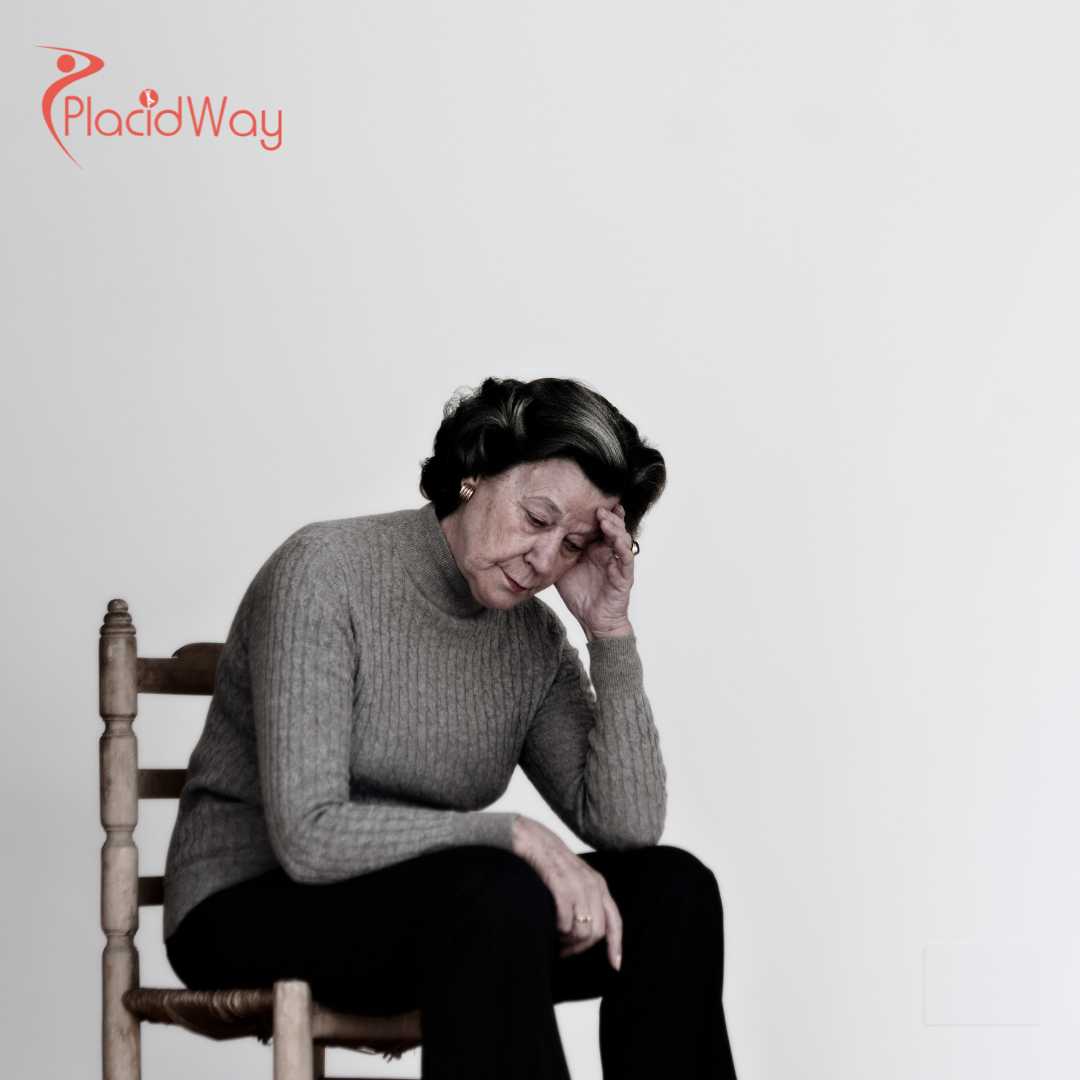
Hope & Healing: Navigating Leukemia Treatment Options Worldwide
Receiving a leukemia diagnosis can be a life-altering moment, bringing with it a whirlwind of emotions and urgent questions about treatment, prognosis, and financial implications. Leukemia is a complex cancer that originates in the blood-forming cells of the bone marrow. Instead of developing into healthy white blood cells, red blood cells, or platelets, these abnormal cells proliferate uncontrollably, crowding out normal blood cells and impairing the body's essential functions, such as fighting infection, carrying oxygen, and clotting blood.
For many, the journey to recovery involves challenging decisions. Beyond the emotional and physical toll, the cost and accessibility of advanced treatments can be a significant barrier. This is where medical tourism offers a beacon of hope. Around the world, highly accredited hospitals and specialized oncology centers provide cutting-edge leukemia treatments at a fraction of the cost found in Western countries, without compromising on quality. Patients seeking options for "affordable leukemia treatment," "best hospitals for leukemia abroad," or "bone marrow transplant cost overseas" are increasingly turning to international medical destinations.
Understanding leukemia starts with recognizing its varied forms and potential symptoms, which can range from subtle to severe. While some types progress slowly, others require immediate, aggressive intervention. The causes are often multifactorial, involving a mix of genetic predispositions and environmental factors. This comprehensive guide aims to demystify leukemia, explore its treatment landscape, and illuminate how medical tourism can connect you with the specialized care you need, wherever you are in the world.
What are the common symptoms of Leukemia to watch for?
Leukemia symptoms can often be vague and mimic those of less serious conditions, making early diagnosis challenging. They arise from the bone marrow's inability to produce enough healthy blood cells, as cancerous cells crowd out the normal ones. It's crucial to pay attention to persistent or worsening signs. Common symptoms patients search for include "signs of leukemia in adults," "childhood leukemia symptoms," and "feeling tired all the time leukemia."
- Persistent Fatigue and Weakness: Caused by a lack of red blood cells (anemia), making you feel unusually tired, weak, and short of breath.
- Frequent Infections or Fever: Due to a shortage of healthy white blood cells, compromising the immune system. Fevers can also be a direct symptom of the disease.
- Easy Bruising or Bleeding: A deficiency in platelets can lead to unexplained bruising, frequent nosebleeds, bleeding gums, or excessive bleeding from minor cuts.
- Weight Loss and Loss of Appetite: Unexplained and often significant weight loss, accompanied by a reduced desire to eat.
- Swollen Lymph Nodes, Liver, or Spleen: Leukemia cells can accumulate in these organs, causing them to enlarge and become palpable. You might feel "swelling in neck or groin."
- Bone or Joint Pain: Caused by the accumulation of leukemia cells near the bone surface or inside the bone.
- Night Sweats: Drenching sweats, often occurring during sleep, are a common symptom.
- Petechiae: Tiny red spots on the skin, caused by small blood vessels leaking due to low platelet count.
If you or a loved one experiences any of these symptoms persistently, especially if they worsen, it's vital to consult a healthcare professional for a thorough evaluation. Early detection significantly improves treatment outcomes.
What causes Leukemia and what are the risk factors?
Leukemia is not typically thought of as a single disease but rather a group of cancers originating from mutations in the DNA of blood-forming cells. While the exact cause for most cases of leukemia remains unknown, researchers have identified several risk factors that can increase a person's likelihood of developing the condition. Patients often search for "what causes blood cancer" or "risk factors for leukemia."
- Genetic Predisposition: While leukemia isn't usually inherited, certain genetic syndromes, such as Down syndrome, Fanconi anemia, and Bloom syndrome, are associated with a higher risk.
- Exposure to Radiation: High-dose radiation exposure, such as from nuclear accidents or previous radiation therapy for other cancers, can increase risk.
- Exposure to Certain Chemicals: Prolonged exposure to chemicals like benzene (found in gasoline and used in the chemical industry) is a known risk factor.
- Previous Cancer Treatment: People who have undergone chemotherapy and radiation therapy for other cancers may have an increased risk of developing secondary leukemias.
- Smoking: Smoking cigarettes can increase the risk of developing acute myeloid leukemia (AML).
- Family History: While rare, a family history of leukemia can slightly increase an individual's risk.
- Certain Viral Infections: Viruses like the human T-cell leukemia virus type 1 (HTLV-1) have been linked to some rare types of leukemia.
It's important to remember that having one or more risk factors does not guarantee you will develop leukemia, and many people with leukemia have no known risk factors. The disease often develops from random mutations occurring over a lifetime.
What are the main types of Leukemia treatments available?
Leukemia is broadly classified into four main types: Acute Myeloid Leukemia (AML), Acute Lymphoblastic Leukemia (ALL), Chronic Myeloid Leukemia (CML), and Chronic Lymphocytic Leukemia (CLL). Each type has distinct characteristics and requires a specific treatment approach. Patients researching "leukemia treatment options," "new treatments for blood cancer," or "how is leukemia treated" will find a range of advanced therapies.
The primary treatments include:
- Chemotherapy: This is often the first line of treatment. It uses powerful drugs to kill leukemia cells. These drugs can be given intravenously or orally and may involve multiple cycles.
- Radiation Therapy: Uses high-energy rays to kill cancer cells or stop their growth. It can be directed at specific areas of the body (e.g., spleen, brain) or, in some cases, total body irradiation may be used before a stem cell transplant.
- Targeted Drug Therapy: These drugs specifically attack vulnerabilities in cancer cells, often by blocking the action of certain proteins or genes that contribute to cancer growth. For example, tyrosine kinase inhibitors (TKIs) are highly effective for CML.
- Immunotherapy: This treatment harnesses the body's own immune system to fight cancer. It can involve various approaches, such as CAR T-cell therapy, where a patient's T-cells are genetically modified to recognize and attack leukemia cells.
- Stem Cell Transplant (Bone Marrow Transplant): This intensive procedure replaces diseased bone marrow with healthy blood-forming stem cells. It can be allogeneic (from a donor) or autologous (using the patient's own cells). This is often a critical option for many acute leukemias and some chronic types, particularly if other treatments fail. Patients often search for "bone marrow transplant for leukemia" or "stem cell therapy for blood cancer."
The specific treatment plan is highly individualized, based on the type of leukemia, its stage, the patient's age, overall health, and personal preferences.
Am I eligible for Leukemia treatment, and how is it diagnosed?
Determining eligibility for leukemia treatment is a multi-step process that begins with an accurate diagnosis. Patients often wonder, "how is leukemia diagnosed" or "who can get bone marrow transplant."
Diagnosis involves several key procedures:
- Physical Exam: Doctors look for signs like swollen lymph nodes, an enlarged spleen or liver, or unusual bruising.
- Blood Tests: A complete blood count (CBC) will show abnormal levels of white blood cells, red blood cells, or platelets. A peripheral blood smear examines the appearance of blood cells.
- Bone Marrow Biopsy and Aspiration: This is a definitive diagnostic tool. A small sample of bone marrow (and sometimes bone tissue) is removed, usually from the hip bone, to look for leukemia cells and determine their type.
- Cytogenetic Analysis: This test examines the chromosomes within leukemia cells to identify specific genetic abnormalities (e.g., Philadelphia chromosome in CML), which helps classify the leukemia and guide treatment.
- Molecular Testing: More advanced genetic tests can detect specific gene mutations or markers that influence treatment decisions and prognosis.
- Lumbar Puncture (Spinal Tap): In some cases, a sample of cerebrospinal fluid (CSF) is taken to check if leukemia cells have spread to the brain and spinal cord.
Eligibility for Treatment:
Once diagnosed, eligibility for specific treatments like chemotherapy, targeted therapy, or a stem cell transplant is assessed based on:
- Type and Stage of Leukemia: Different treatments are recommended for acute vs. chronic and myeloid vs. lymphocytic leukemias.
- Patient's Age and Overall Health: Intensive treatments like stem cell transplants require a certain level of physical resilience. Co-existing health conditions (comorbidities) are carefully evaluated.
- Availability of a Donor (for allogeneic transplant): Finding a matched donor is crucial for allogeneic stem cell transplants.
- Response to Initial Treatment: Sometimes, eligibility for more advanced treatments depends on how well the leukemia responds to initial therapies.
A multidisciplinary team of oncologists, hematologists, and other specialists will determine the most appropriate and effective treatment plan for each individual patient.
What is the typical recovery time and what can I expect after Leukemia treatment?
The journey after leukemia treatment is highly personal and can range from a few weeks to over a year, depending on the intensity of the treatment, the type of leukemia, and individual patient factors. Patients often search for "life after leukemia treatment" or "recovering from bone marrow transplant."
After Chemotherapy/Radiation:
- Short-Term: Fatigue, nausea, hair loss, mouth sores, and increased susceptibility to infections are common. These usually resolve within weeks to a few months after treatment completion.
- Mid-Term: Regaining energy levels and rebuilding the immune system takes time. Regular blood tests and follow-up appointments are crucial to monitor for remission and potential side effects.
After Stem Cell Transplant (Bone Marrow Transplant):
- Hospital Stay: Typically 3-6 weeks post-transplant to monitor for engraftment, infections, and other complications.
- Initial Recovery (First 100 Days): This is a critical period where the new immune system is fragile. Patients must live in a highly sterile environment, avoid crowds, and adhere strictly to medication schedules. Fatigue, loss of appetite, and susceptibility to infections are prominent.
- Long-Term Recovery (Up to 1 Year or More): Full immune system recovery can take 6 months to several years. Graft-versus-host disease (GVHD), a potential complication of allogeneic transplants, can affect various organs and require ongoing management. Patients gradually return to normal activities, but long-term follow-up and monitoring for late effects are essential.
Regardless of the treatment, emotional and psychological support is vital. Many patients experience anxiety, depression, or fear of recurrence. Support groups, counseling, and a strong support system play a significant role in overall recovery and quality of life.
What are the risks and side effects associated with Leukemia treatments?
While leukemia treatments are life-saving, they are potent and come with a range of potential risks and side effects. These can vary greatly depending on the specific therapy, dosage, duration, and individual patient factors. Patients often search for "chemotherapy side effects," "risks of bone marrow transplant," or "long-term effects of leukemia treatment."
Common Side Effects Across Treatments:
- Fatigue: Profound tiredness is almost universal.
- Nausea and Vomiting: Often managed with anti-nausea medications.
- Hair Loss: Common with chemotherapy and total body radiation.
- Mouth Sores (Mucositis): Painful inflammation of the mouth and throat.
- Increased Infection Risk: Due to a weakened immune system (low white blood cell count).
- Anemia: Low red blood cell count, leading to fatigue and shortness of breath.
- Thrombocytopenia: Low platelet count, increasing risk of bruising and bleeding.
Treatment-Specific Risks and Side Effects:
- Chemotherapy: Can cause organ damage (heart, kidney, liver), nerve damage (neuropathy), and infertility.
- Radiation Therapy: Skin changes resembling sunburn, localized hair loss, fatigue, and potential for secondary cancers years later.
- Targeted Therapy: While generally milder than chemo, side effects can include skin rashes, diarrhea, fluid retention, and heart problems depending on the specific drug.
- Immunotherapy: Can over-activate the immune system, leading to inflammation in various organs (e.g., colitis, thyroiditis). CAR T-cell therapy has specific risks like cytokine release syndrome (CRS) and neurological toxicity.
- Stem Cell Transplant: This is the most intensive treatment with the most significant risks. Beyond common side effects, it includes:
- Graft-versus-Host Disease (GVHD): The donor's immune cells attack the recipient's healthy tissues. Can be acute (early) or chronic (late), affecting skin, liver, gut, and other organs.
- Organ Damage: Due to high-dose chemotherapy/radiation (conditioning regimen).
- Infections: Extreme vulnerability to bacterial, viral, and fungal infections for months to years.
- Relapse: The leukemia can return.
- Secondary Cancers: A long-term risk due to intensive treatment.
Medical teams work diligently to prevent and manage these side effects, ensuring patient comfort and safety throughout the treatment process.
How do Leukemia treatment costs compare globally? (Cost Comparison Table)
The cost of leukemia treatment is a major concern for many patients and their families. Without robust insurance, even standard care can quickly become astronomically expensive in countries like the United States. This financial burden is a primary driver for patients exploring "affordable leukemia treatment abroad" or "cost of cancer treatment overseas." Medical tourism offers a compelling alternative, providing access to high-quality care at significantly lower prices.
Here’s a comparative look at estimated costs for common leukemia treatments across different regions:
| Procedure/Treatment | USA (USD) | Germany (USD) | India (USD) | Mexico (USD) | Turkey (USD) |
|---|---|---|---|---|---|
| Chemotherapy (per cycle, incl. drugs & admin) | $10,000 - $30,000+ | $5,000 - $15,000 | $1,000 - $5,000 | $1,500 - $6,000 | $2,000 - $8,000 |
| Targeted Therapy (per month of drugs, initial consult) | $8,000 - $20,000+ | $4,000 - $10,000 | $1,500 - $4,000 | $2,000 - $7,000 | $2,500 - $8,000 |
| Bone Marrow Transplant (Allogeneic, full package incl. hospital stay, tests, drugs) | $300,000 - $800,000+ | $100,000 - $300,000 | $30,000 - $70,000 | $50,000 - $150,000 | $40,000 - $100,000 |
| CAR T-cell Therapy (full package) | $400,000 - $1,000,000+ | $200,000 - $500,000 | $80,000 - $150,000 | Not widely available/structured | $100,000 - $250,000 |
Note: These figures are estimates and can vary significantly based on the specific hospital, doctor's fees, type and duration of medication, length of stay, pre/post-operative care, and individual patient needs. They do not include travel or accommodation costs.
As evident, the potential for savings in certain medical tourism destinations is substantial, making life-saving treatments accessible to a wider range of patients.
Why consider leukemia treatment abroad through medical tourism?
For patients facing a leukemia diagnosis, exploring treatment abroad through medical tourism can unlock a wealth of benefits that might not be available domestically. This is especially true for those searching for "cost-effective cancer treatment," "access to new leukemia drugs," or "avoiding long waitlists for oncology."
- Significant Cost Savings: As seen in the table above, the most compelling reason is often the dramatic reduction in treatment costs, sometimes saving 50-80% compared to Western countries. This makes life-saving care affordable for those without adequate insurance.
- Access to Advanced Therapies: Many international hospitals are at the forefront of medical innovation, offering access to cutting-edge treatments, clinical trials, or specific targeted therapies that may not yet be approved or widely available in a patient's home country.
- Shorter Wait Times: In some national healthcare systems, lengthy waitlists for critical procedures like stem cell transplants or specialist consultations can be a matter of life and death. Medical tourism often provides immediate access to treatment.
- World-Class Expertise and Facilities: Many medical tourism hubs boast internationally accredited hospitals (e.g., JCI accreditation) with highly trained oncologists and hematologists who have received education and training in leading global institutions. These facilities are often equipped with state-of-the-art technology.
- Personalized Care and Attention: Clinics catering to international patients often provide a more personalized, holistic experience, including dedicated patient coordinators, language services, and support for travel logistics.
For many, medical tourism isn't just about saving money; it's about finding hope and the best possible chance at recovery.
Which countries offer the best value for leukemia treatment and care?
When searching for "best hospitals for cancer treatment abroad" or "affordable bone marrow transplant countries," several nations consistently rise to the top for their combination of quality, affordability, and patient-focused services. These countries have invested heavily in their healthcare infrastructure, making them attractive destinations for medical tourists seeking leukemia treatment.
- India: Renowned for its highly skilled doctors, world-class hospitals with JCI accreditation, and incredibly competitive pricing. India offers a full spectrum of leukemia treatments, including complex bone marrow transplants, often at a fraction of Western costs.
- Turkey: Positioned as a bridge between East and West, Turkey boasts modern hospitals with state-of-the-art equipment and internationally trained medical professionals. It offers excellent value for chemotherapy, targeted therapy, and stem cell transplants, particularly in cities like Istanbul and Ankara.
- Mexico: A popular choice for North American patients due to proximity and significant cost savings. Mexican hospitals are often JCI-accredited and provide high-quality oncology care, especially in border cities and medical hubs like Cancun and Guadalajara.
- Thailand: Known for its exceptional hospitality and advanced medical facilities, particularly in Bangkok. Thailand offers comprehensive cancer care with a strong focus on patient experience, combined with competitive pricing.
- South Korea: A leader in medical technology and research, South Korea offers highly advanced leukemia treatments, including innovative immunotherapies and precise diagnostic tools. While slightly higher in cost than some other Asian destinations, it remains more affordable than many Western countries while providing cutting-edge care.
- Germany: For those seeking European standards of care at slightly more competitive prices than the US, Germany offers excellent medical infrastructure, renowned specialists, and a strong focus on research-backed treatments.
Each country offers unique advantages, and the "best" choice often depends on specific treatment needs, budget, and personal preferences.
What should I expect when traveling abroad for leukemia treatment?
Undertaking leukemia treatment abroad is a significant journey that requires meticulous planning and preparation. Patients often seek advice on "medical tourism planning for cancer" or "how to travel for chemotherapy abroad."
- Initial Consultation and Medical Records: The process typically begins with an online consultation. You'll need to gather and translate all your medical records (diagnosis reports, previous treatments, imaging scans) to allow the international medical team to assess your case and propose a treatment plan.
- Travel Logistics:
- Visa: Check visa requirements for your chosen destination. Some countries offer specific medical visas.
- Flights & Accommodation: Book flights and long-term accommodation for yourself and any accompanying caregivers. Many hospitals have affiliated guesthouses or work with hotels offering medical patient rates.
- Travel Insurance: Ensure you have comprehensive travel insurance that covers medical emergencies and potential treatment complications abroad.
- On-Site Experience:
- Airport Pick-up & Translator: Many medical tourism facilitators and hospitals arrange airport transfers and provide translators for seamless communication.
- Pre-Treatment Tests: Upon arrival, you'll undergo new diagnostic tests to confirm the diagnosis and finalize the treatment plan.
- Treatment Duration: Be prepared for an extended stay, especially for intensive treatments like bone marrow transplants, which can require several months.
- Follow-up Care: Discuss how post-treatment follow-up and long-term medication management will be handled once you return home.
- Support System: Having a friend or family member accompany you is highly recommended for emotional support and practical assistance.
Using a reputable medical tourism facilitator can significantly ease this process, handling many of the logistical challenges and ensuring clear communication between you and the foreign medical team.
How can I ensure safety and quality for leukemia treatment abroad?
Ensuring the safety and quality of medical care abroad is paramount, especially for a serious condition like leukemia. Diligent research and careful vetting are essential. Patients frequently ask, "how to choose a safe hospital abroad" or "is medical treatment overseas reliable."
- Look for International Accreditation: Prioritize hospitals with internationally recognized accreditations like Joint Commission International (JCI). This signifies adherence to rigorous patient safety and quality standards, comparable to top hospitals in Western countries.
- Verify Doctor Credentials and Experience: Research the oncologists and hematologists who will be managing your care. Look for doctors who are board-certified, have extensive experience specifically in leukemia treatment, and have trained in reputable institutions.
- Check for Specialization and Technology: Ensure the facility has a dedicated oncology department, equipped with the latest diagnostic and treatment technologies specific to leukemia, such as advanced imaging, molecular diagnostics, and specialized units for stem cell transplants.
- Read Patient Reviews and Testimonials: Seek out feedback from previous international patients, particularly those who underwent similar leukemia treatments. Online forums and medical tourism platforms can be good sources.
- Use Reputable Medical Tourism Facilitators: Companies like PlacidWay specialize in connecting patients with vetted, high-quality international providers. They can provide unbiased information, help with provider selection, and assist with logistics, adding an extra layer of assurance.
- Clear Communication and Transparency: Ensure there's clear communication with the medical team regarding your diagnosis, treatment plan, potential risks, and expected outcomes. All costs should be transparently itemized.
- Pre-treatment Consultation: Insist on a thorough video consultation with the treating physician before committing to travel, to address all your questions and concerns directly.
By taking these steps, you can significantly mitigate risks and increase your confidence in the quality of care you will receive abroad.
What are patient success stories from abroad for leukemia treatment?
The decision to travel abroad for leukemia treatment is often driven by real-life stories of others who have found success and renewed hope. While specific individual stories are protected by patient privacy, the collective experience of thousands of medical tourists speaks volumes about the efficacy and benefits of seeking care overseas. Patients often search for "leukemia survivor stories abroad" or "successful bone marrow transplant overseas."
Imagine Anna, a 35-year-old from Canada diagnosed with an aggressive form of AML. Facing a year-long waitlist for a critical stem cell transplant and astronomical costs for private care at home, her family felt desperate. Through a medical tourism facilitator, she connected with a JCI-accredited hospital in India. Within weeks, she was undergoing her transplant, guided by a team of highly experienced hematologists. Not only did the treatment cost a fraction of what it would have domestically, but Anna also received meticulous post-operative care and returned home in remission, having regained her health and hope for the future.
Or consider Ben, a retiree from the UK with CLL, whose targeted therapy was proving ineffective. His oncologist suggested a newer, expensive immunotherapy not yet widely funded by the NHS for his specific stage. Research led him to Turkey, where the same advanced treatment was available at a significantly lower price. Ben flew to Istanbul, where he experienced compassionate care in a state-of-the-art facility. After several cycles, his condition stabilized, and he returned home with a manageable long-term plan, vastly improving his quality of life without depleting his life savings.
These narratives highlight common themes: the profound relief of accessing timely, affordable, and high-quality care; the expertise of international medical professionals; and the significant impact of these decisions on patients' lives. For many, medical tourism doesn't just offer treatment; it offers a second chance at life.
Take the Next Step with PlacidWay
Ready to explore treatment options abroad? Discover top clinics, compare prices, and get a free quote tailored to your needs with PlacidWay.
Cancer Treatment Abroad, Breast Cancer, Lung Cancer










Share this listing